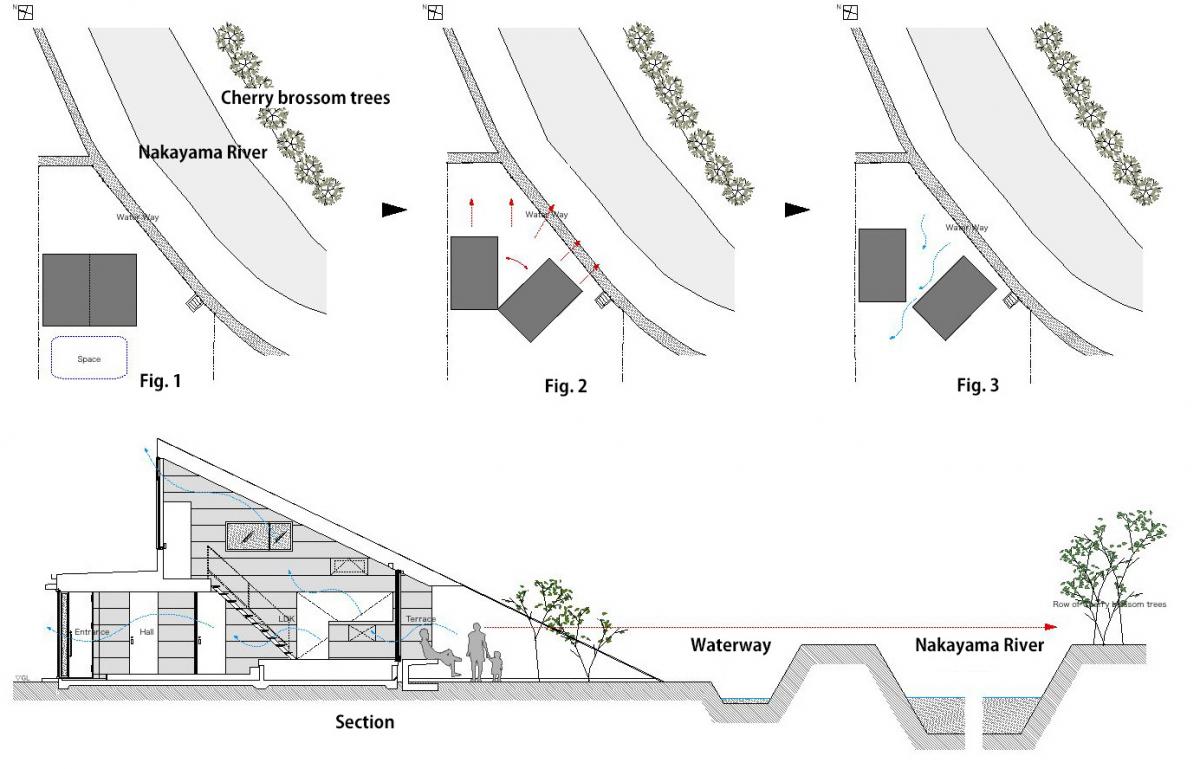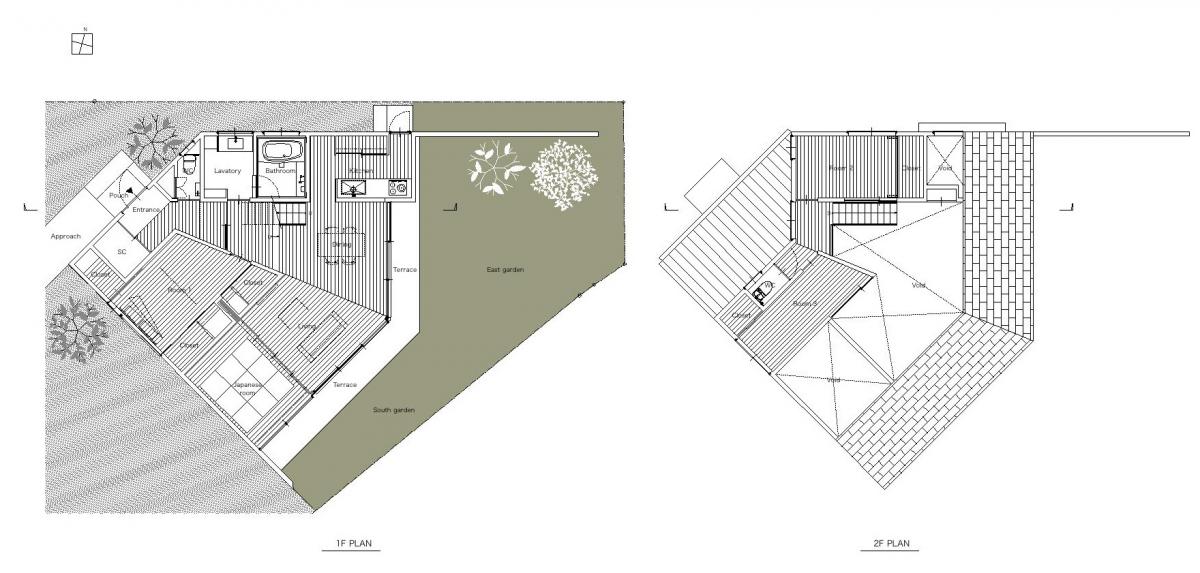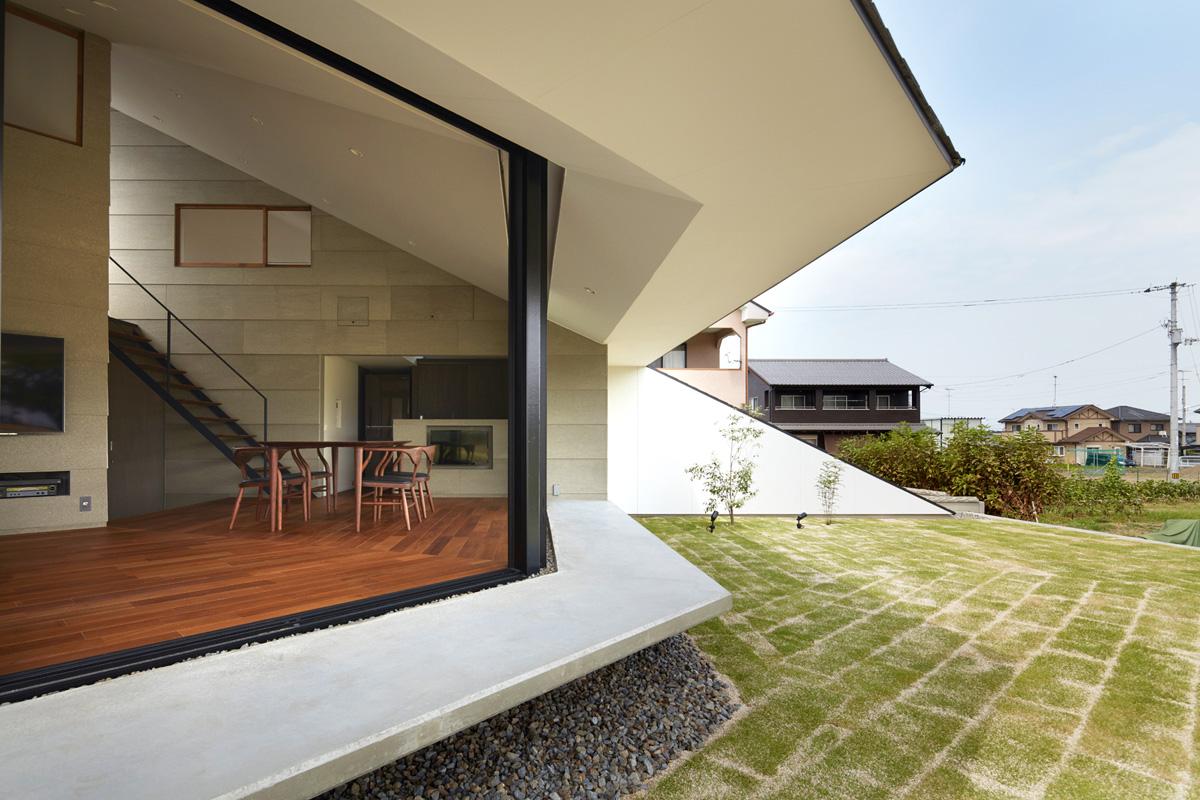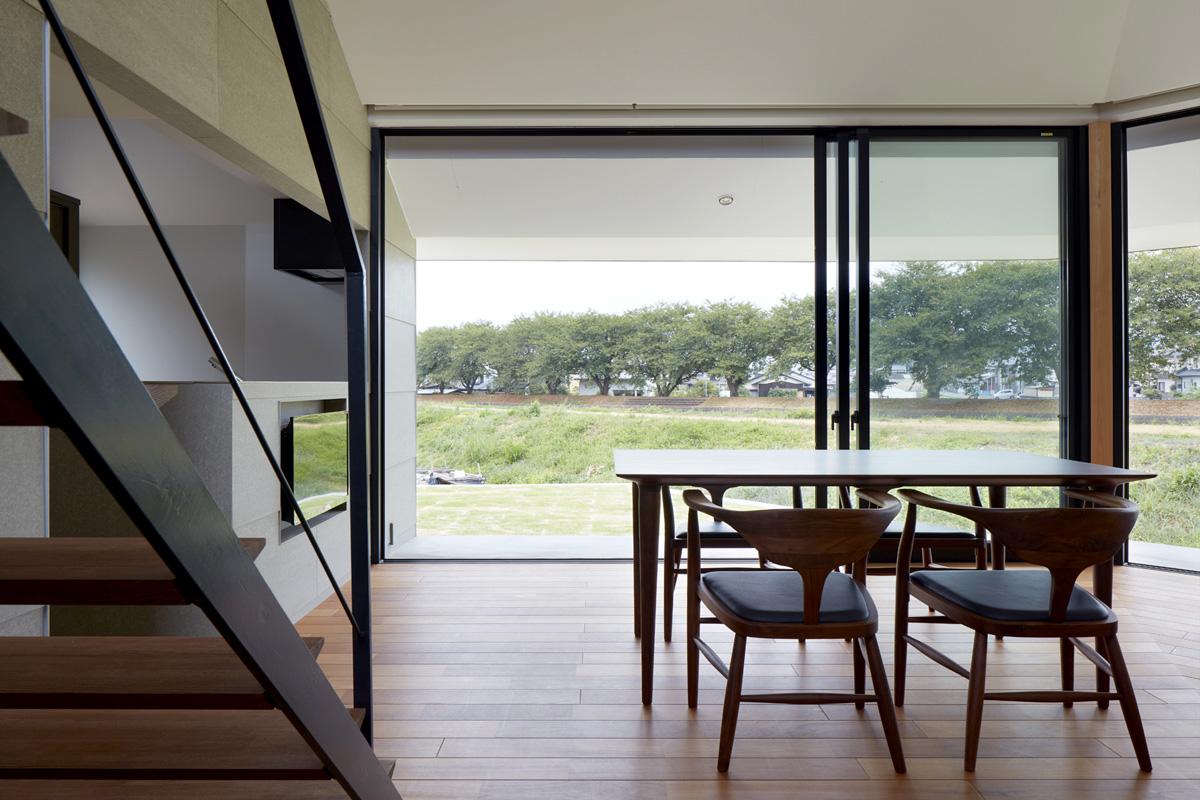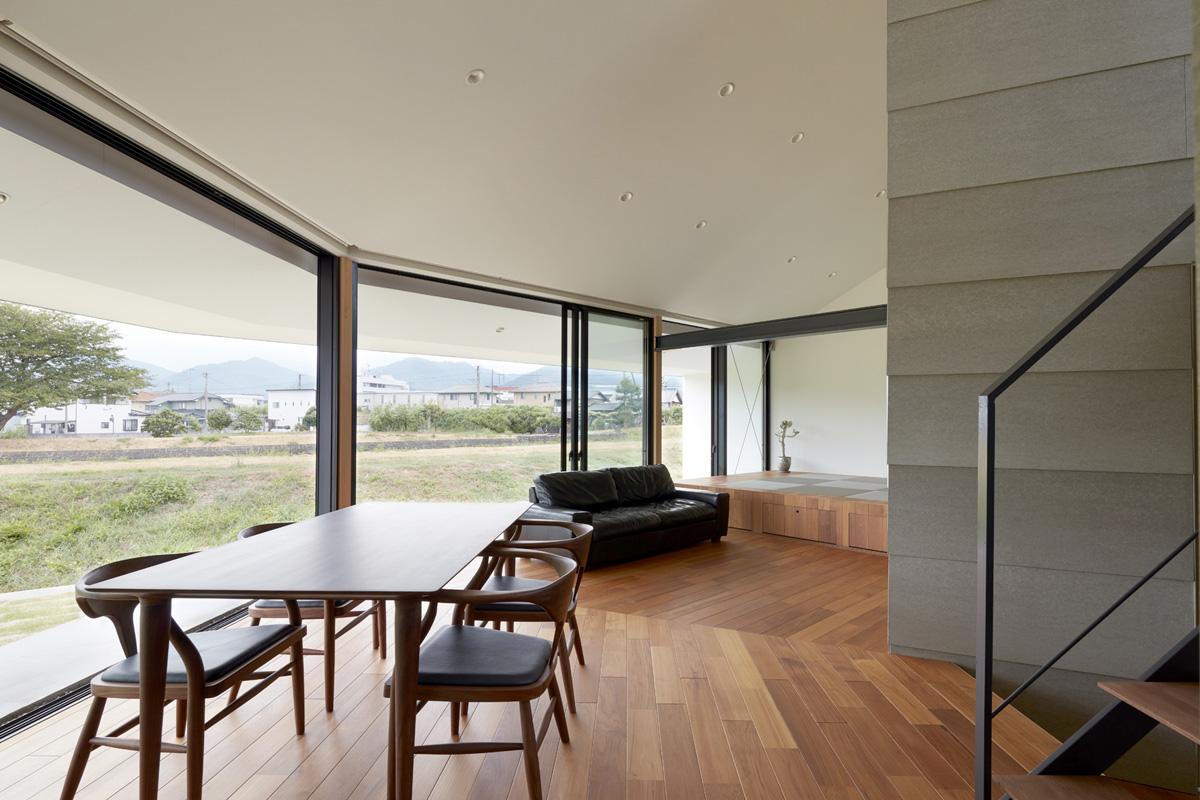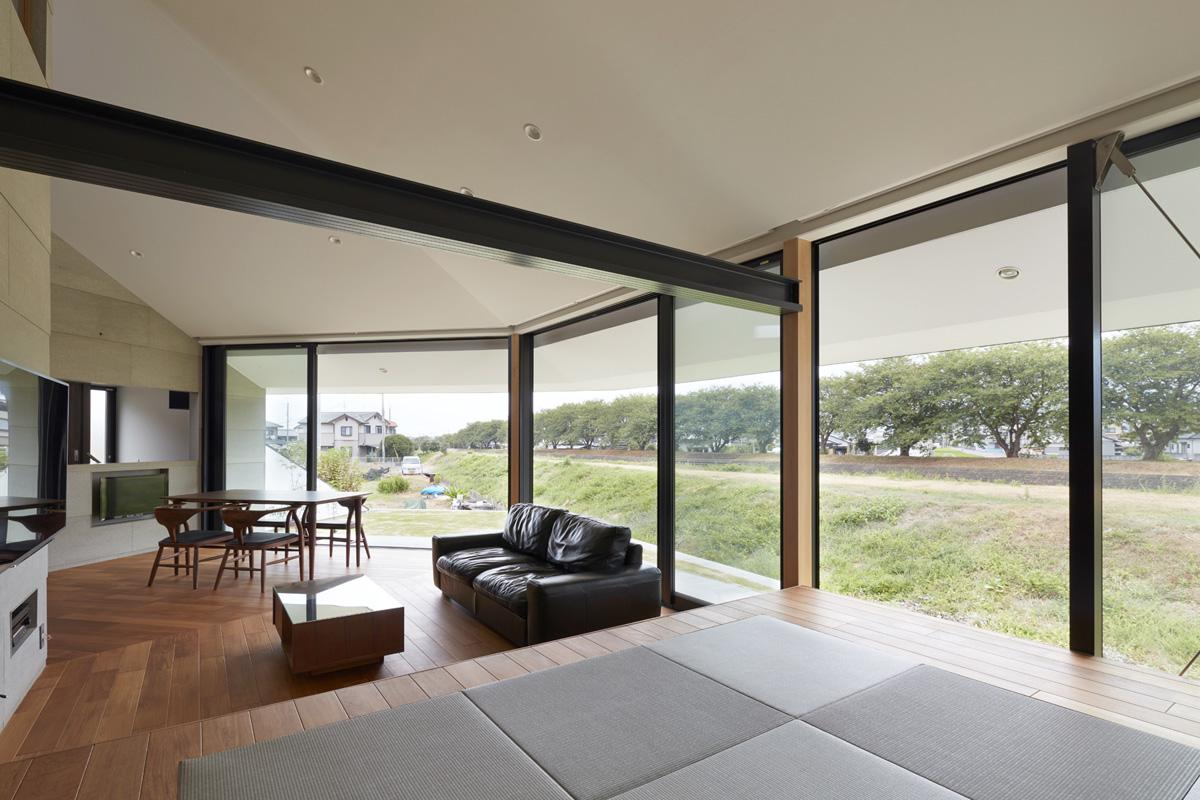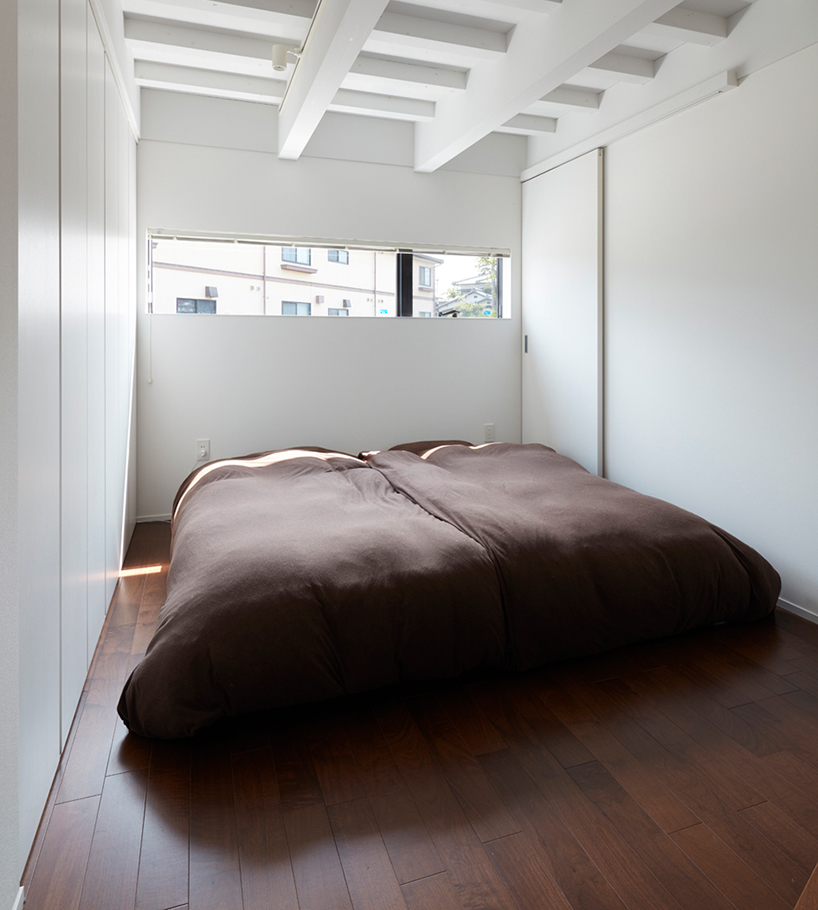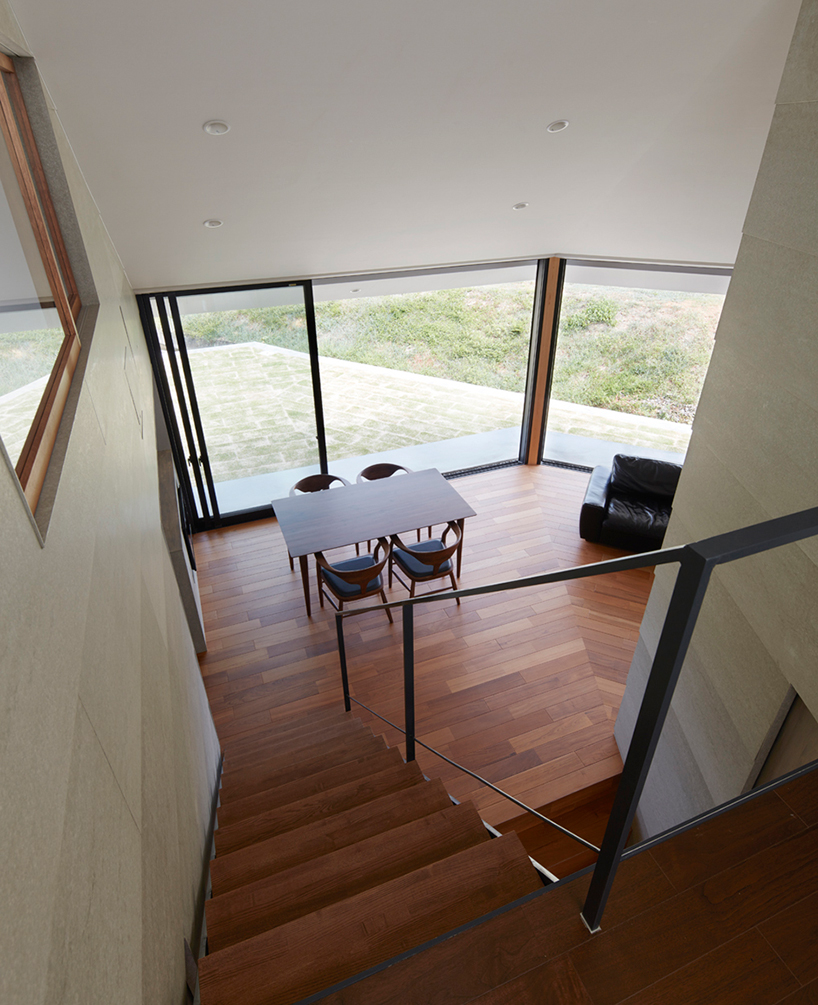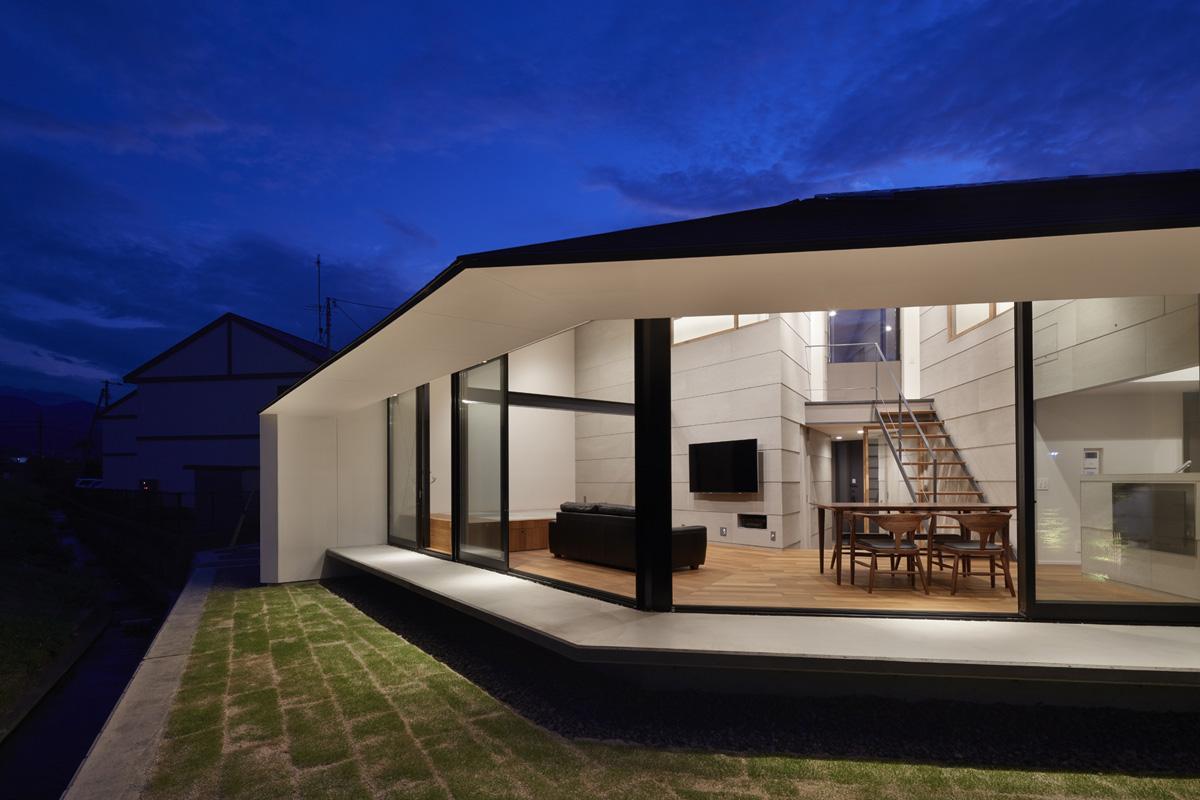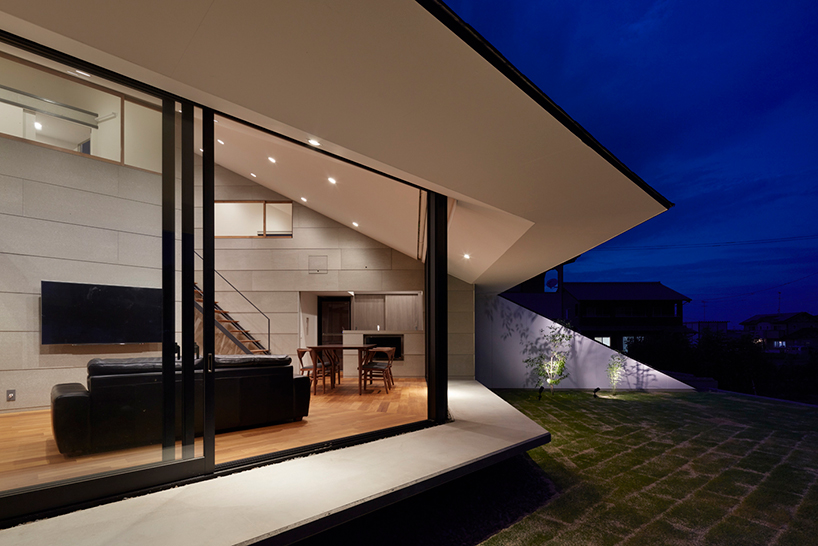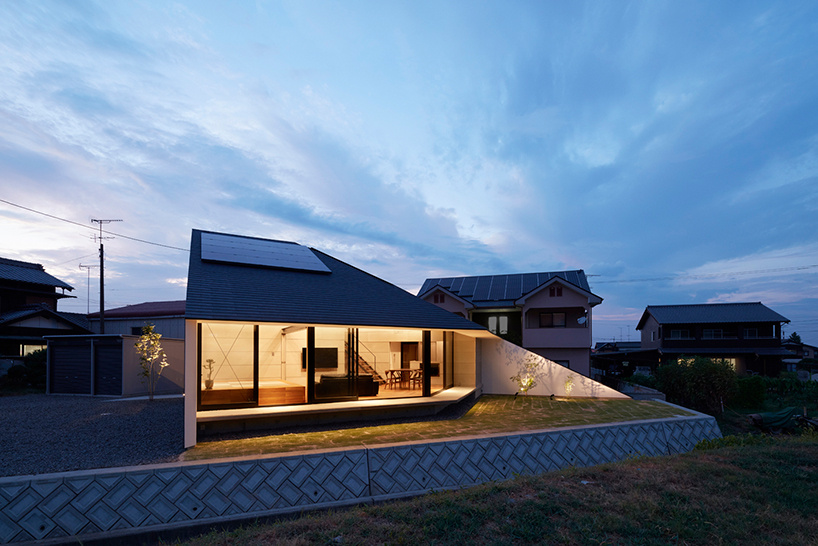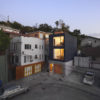The ‘House in Shinyashiki’ is a two-storey family dwelling designed by Hayato Komatsu Architects in Saijo, Ehime prefecture, Japan.
The site is bordered by Nakayama river with views of mount ishizuchi in the backdrop all of which the client requested the design take full advantage of. A wooden structure, dramatic sloping roof and generous, ‘deep-eaved’ terrace area are some of the hallmarks of the design along with an open place living area bounded by sliding glass walls that offer views of the aforementioned rich environment.
ARCHITECT’S DESCRIPTION [via World Architects]
This residence sits on the wide plains of the Komatsucho district in Saijo, Ehime prefecture. The site enjoys a view of Mt. Ishizuchi and the surrounding peaks, which are among the most renowned in Japan, and is bordered to the east by the Nakayama river, which originates in that mountain range. It is located near a well-known cherry-blossom viewing spot in the mountains called Sakurasanri, and in early spring, the cherry blossom trees lining the river just across from the site burst into flower as well, as if they’ve spread from the mountain. The client wanted to incorporate this gorgeous setting into the residence to the greatest extent possible.
Taking into consideration the fact that the wind blows from east to west in this area, we left an open space on the west side of the site and placed the building on the east (Fig. 1). By dividing the building in two and opening it like a fan, we created a form that fully takes in the views (Fig. 2). The exterior wall on the east side extends the slope of the roof down to the ground, functioning not only to gently block views of the house from neighboring properties, but also to create the sense that the wall is reaching out to invite in the views, or alternately, that the wall is softly embracing the house. Furthermore, by opening up a crevasse-like gap between the buildings for the wind to pass through, we brought cool breezes from the river into the rooms (Fig. 3).  Because the site is large, the issue of how to create the story of the house also arose. The circulation concept we arrived at has visitors and residents approach the house from the west, open the front door, and see the light-filled crevasse further back before continuing on to the panoramic views of the landscape. The hall, living-dining-kitchen area, and Japanese-style room are successively elevated 400 mm above one another, which creates a variety of views and moods within the house. Beyond the living-dining-kitchen area is a terrace that spans the entire width of the house and is protected by deep eaves, providing a space for various gatherings.
Because the site is large, the issue of how to create the story of the house also arose. The circulation concept we arrived at has visitors and residents approach the house from the west, open the front door, and see the light-filled crevasse further back before continuing on to the panoramic views of the landscape. The hall, living-dining-kitchen area, and Japanese-style room are successively elevated 400 mm above one another, which creates a variety of views and moods within the house. Beyond the living-dining-kitchen area is a terrace that spans the entire width of the house and is protected by deep eaves, providing a space for various gatherings.
By creating a building that neither opposes the environment nor fuses with it, but rather simply and directly embodies the site conditions, we were able in this project to achieve a sense of both expansiveness and tolerance.



